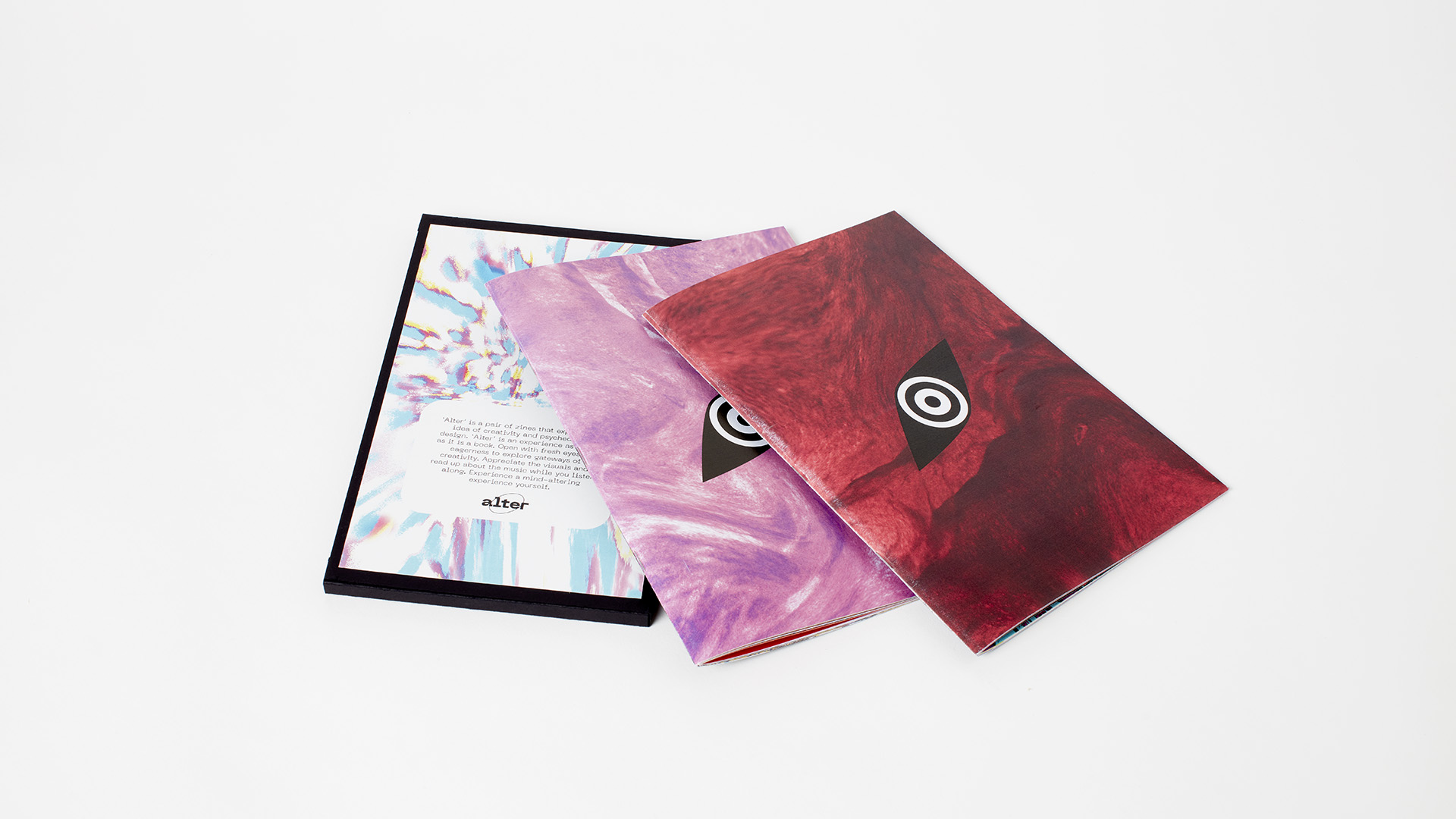
A PSYCHEDELIC EXPLORATION
Creative blocks are common for creative minds, and it isn’t new for us to actively seek ways to pass through this wall of confusion and uneasiness. As a graphic designer, I am fascinated by how psychedelic design and music can evoke thoughts and feelings leading to thinking more creatively. Recently it is evident that a new wave of psychedelic design and inspiration from the 60s has come about through music and art.
Alter is an exploration of the design process, the discovery of creativity, and the visualisation of mind-altering experiences in the form of two zines. The zines are a collection of visual responses and a reflection of mind-altering exercises as a process for design, as well as first-hand translations and experiences of my own, using editorial layouts and spreads. Altermoving supports the zine and is a collection of moving visuals in an attempt to create another level of sensory engagement.
Psychedelic drugs have been used experimentally in the past as a gateway to opening up the mind creatively. Nowadays, we are not necessarily limited to these drugs to achieve the same results. From Salvador’s Dali’s keys and plate (Carr, M. 2015) to David Lynch’s transcendental meditation (Lynch, D.), it is evident that artificially induced mind-altering exercises are not new and have been explored in the past. Alter is inspired by mind-alteration and the different altered states I experienced to find creativity.
Prior to the development of this project, I found myself looking to psychedelic music as a way to spark creative thoughts as it has always been something that I find comforting and worked. Artists like Tame Impala and Beach House explore the psychedelic sound that drifts you off into the abyss, and I found an opportunity to take my love for the music genre and combine it with my eagerness to find creativity and new ideas.
Alter includes two zine-styled publications that each represent the two different states that I explored throughout the duration of the project's development. A design feature that I found to be important to my project was the interaction between the reader and the zines. As a flat physical object, it is hard to engross yourself completely into the work, and I responded to this idea by integrating the in-between pages within my zines.
My Music State and Dream State zines are accompanied by an Instagram account link that explores these visual ideas in a different sensory environment, moving. Though there is a physical boundary of size in a physical aspect of my zines I hoped to transform these pages into moving images and can be found under the Instagram handle @altermoving. I aimed to extend the experience of these 2D visual ‘trips’ into another level of visual sensory exploration.
Overall this project aims to show the possibility of different methods to open the gate of creativity in yourself. It shows my personal expression and experience in response to the different creative processes that I explored. I hope Alter can be an example to explore new ways of creativity and encourage the process of mind-alteration as a viable way to design.
Carr, M. (2015, February 20). How to dream like Salvador Dali. Psychology Today.
David Lynch Foundation. (n.d.). About TM. David Lynch Foundation | Transcendental Meditation.



